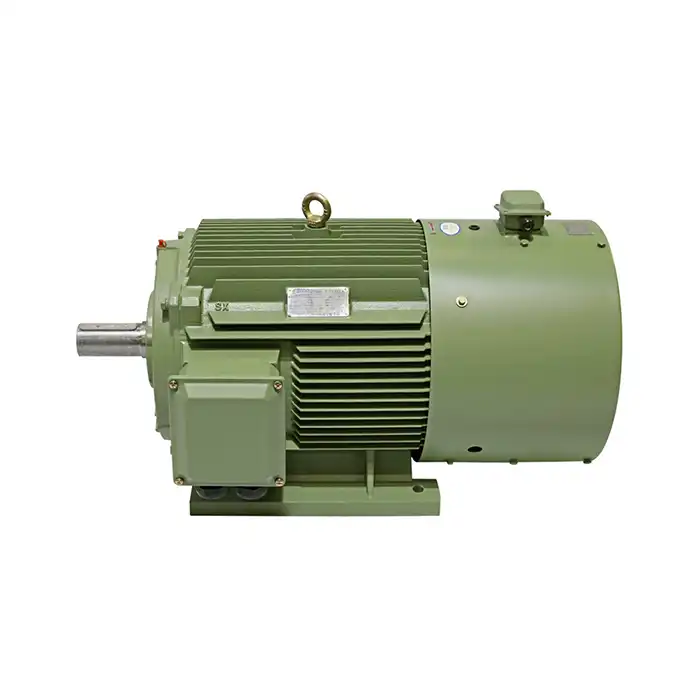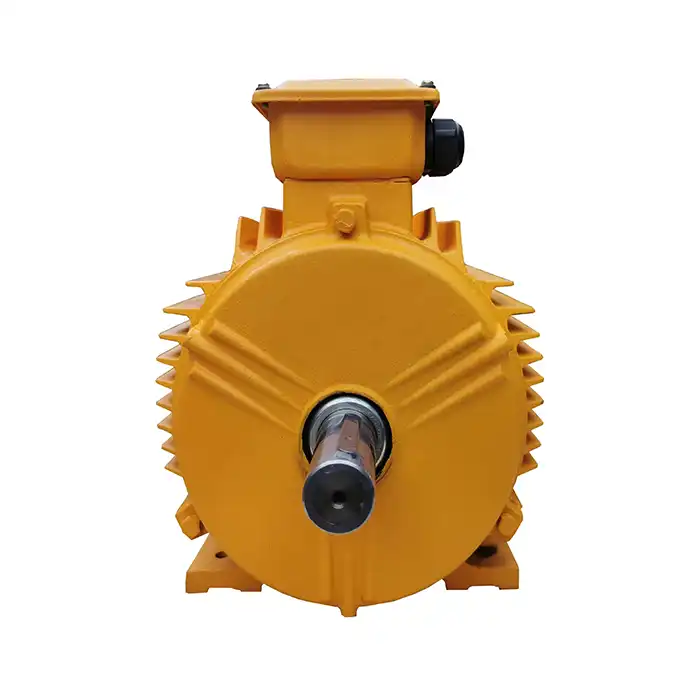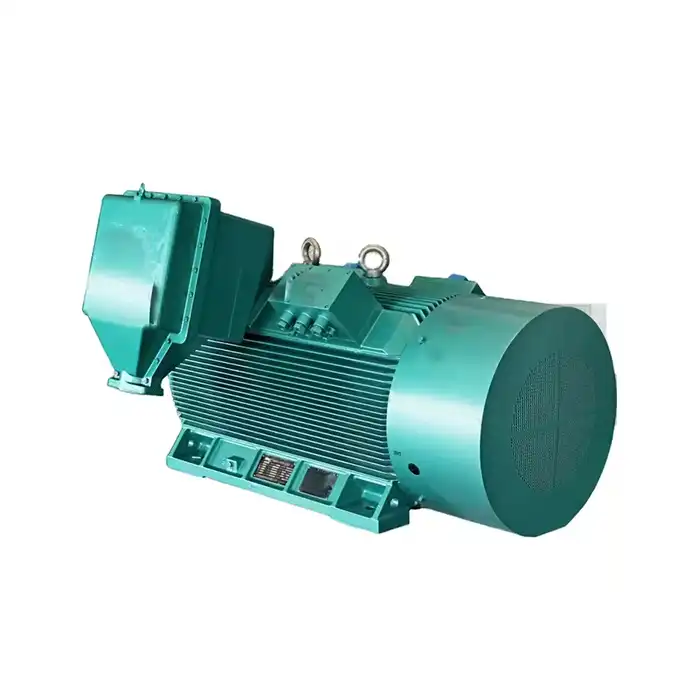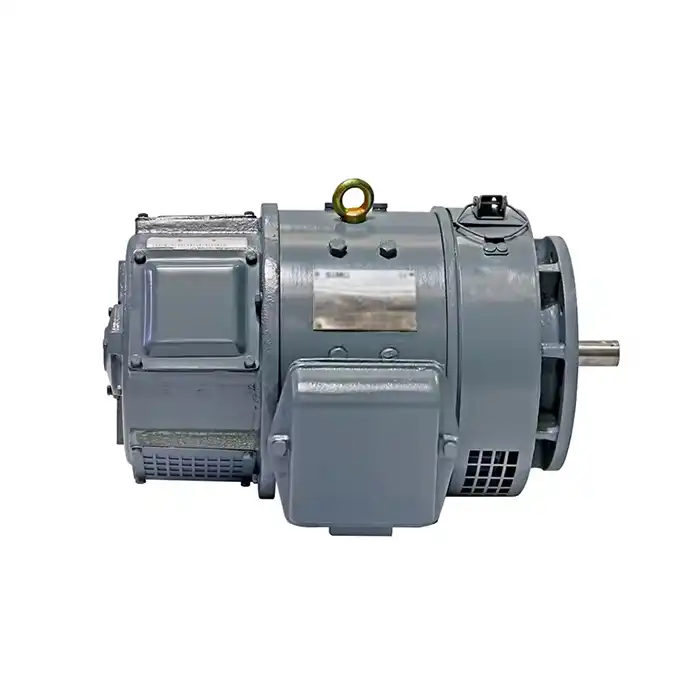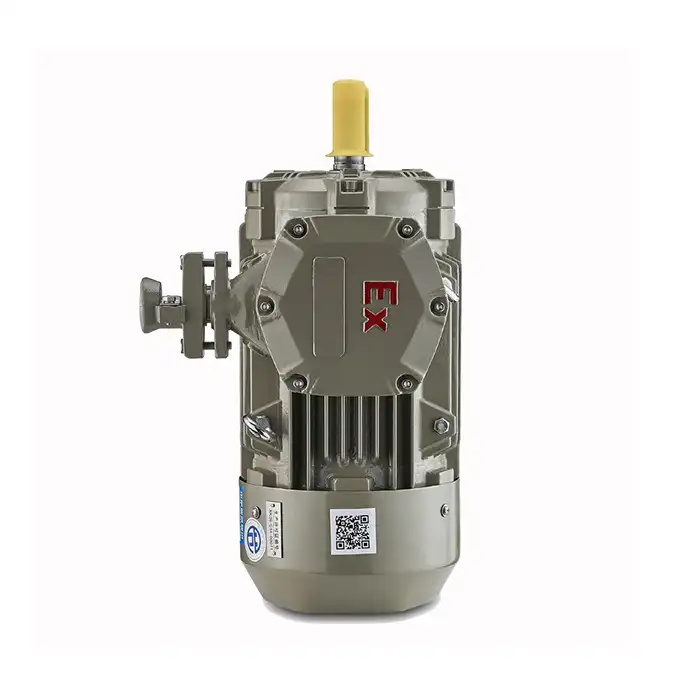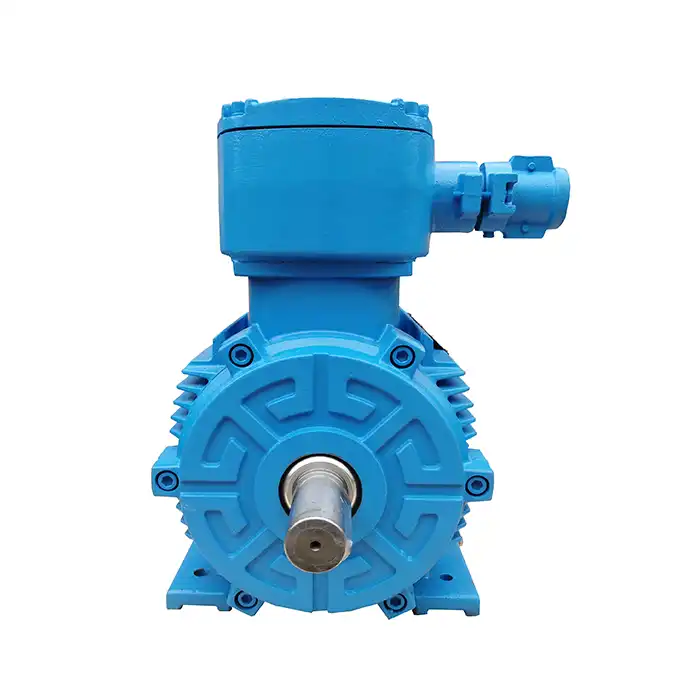B-Class Insulation 200 HP AC Electric Motor – Technical Guide
When it comes to powerful electric motors, the 200 HP AC electric motor is popular in various industrial applications. One crucial aspect of these motors is their insulation class, with B-Class insulation being a popular choice. This technical guide delves into the intricacies of B-Class insulation in 200 HP AC motors, exploring its temperature limits, impact on motor lifespan, and performance compared to other insulation classes.
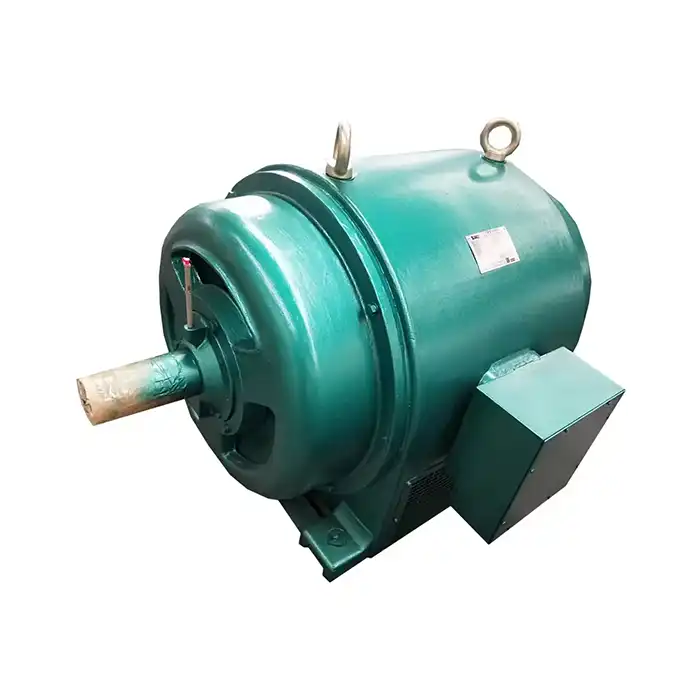
Understanding B-Class Insulation Temperature Limits
B-Class insulation is a crucial component in 200 HP AC electric motors, playing a vital role in protecting the motor's windings from heat damage. The temperature limits for B-Class insulation are carefully defined to ensure optimal motor performance and longevity.
The maximum allowable temperature rise for B-Class insulation is 80°C above the ambient temperature, which is typically assumed to be 40°C. This means that the total permissible temperature for B-Class insulated windings is 120°C. It's important to note that this limit includes both the ambient temperature and the temperature rise caused by the motor's operation.
To put this into perspective, let's consider a 200 HP AC electric motor operating in an environment with an ambient temperature of 35°C. In this case, the motor's windings can safely reach a temperature of 115°C (35°C ambient + 80°C rise) without risking damage to the insulation.
The temperature limits of B-Class insulation are not arbitrary. They are based on extensive research and testing to determine the point at which the insulation materials begin to degrade. Exceeding these limits can lead to a rapid breakdown of the insulation, potentially resulting in motor failure.
It's worth noting that while B-Class insulation can withstand temperatures up to 120°C, it's generally recommended to operate the motor at lower temperatures whenever possible. This is because the insulation's lifespan is inversely related to its operating temperature – the cooler it runs, the longer it lasts.
For 200 HP AC electric motors, maintaining temperatures within the B-Class insulation limits is crucial for several reasons:
- Preventing premature insulation breakdown
- Ensuring consistent motor performance
- Extending the overall lifespan of the motor
- Reducing the risk of unexpected downtime
- Minimizing maintenance and replacement costs
To monitor and maintain these temperature limits, many 200 HP AC electric motors are equipped with temperature sensors embedded in the windings. These sensors provide real-time data on the motor's internal temperature, allowing operators to take action if the temperature approaches the B-Class limit.
Additionally, proper motor ventilation and cooling systems play a crucial role in maintaining temperatures within the B-Class insulation limits. For 200 HP AC electric motors, this often involves forced air cooling or even liquid cooling systems in high-demand applications.
How Insulation Class Affects Motor Lifespan
The insulation class of a 200 HP AC electric motor has a direct and significant impact on its lifespan. B-Class insulation, with its specific temperature limits, plays a crucial role in determining how long a motor can operate efficiently and reliably.
The relationship between insulation class and motor lifespan is based on a well-established principle in electrical engineering known as the "10-degree rule." This rule states that for every 10°C increase in operating temperature above the insulation class limit, the motor's lifespan is approximately halved. Conversely, for every 10°C decrease in operating temperature, the motor's lifespan can potentially double.
For a 200 HP AC electric motor with B-Class insulation, this means:
- Operating at the maximum temperature of 120°C will result in the expected lifespan.
- Operating at 130°C could reduce the motor's lifespan by half.
- Operating at 110°C could potentially double the motor's lifespan.
This relationship between temperature and lifespan is due to the thermal degradation of the insulation materials. Higher temperatures accelerate the breakdown of these materials, leading to a shorter overall lifespan for the motor.
It's important to note that the lifespan of a 200 HP AC electric motor is not solely determined by its insulation class. Other factors that can affect motor longevity include:
- Operating conditions (e.g., frequency of starts and stops, load variations)
- Environmental factors (humidity, contaminants, altitude)
- Maintenance practices
- Quality of power supply
However, the insulation class remains a critical factor in determining the motor's potential lifespan. For 200 HP AC electric motors with B-Class insulation, operating within the specified temperature limits is crucial for maximizing longevity.
To illustrate the impact of insulation class on motor lifespan, consider the following scenario:
Two identical 200 HP AC electric motors are installed in similar applications. Motor A has B-Class insulation and operates at an average temperature of 115°C. Motor B also has B-Class insulation but operates at an average temperature of 105°C due to better cooling and lighter load conditions. Based on the 10-degree rule, Motor B could potentially last twice as long as Motor A, despite being the same model with the same insulation class.
This example underscores the importance of not only selecting the appropriate insulation class for a 200 HP AC electric motor but also ensuring that the motor operates at the lowest possible temperature within that class.
To maximize the lifespan of a 200 HP AC electric motor with B-Class insulation, consider the following strategies:
- Implement effective cooling systems to keep operating temperatures low
- Regularly monitor winding temperatures using embedded sensors
- Perform routine maintenance to ensure optimal motor performance
- Address any issues that could lead to increased operating temperatures promptly
- Consider oversizing the motor for applications with high ambient temperatures or demanding duty cycles
By understanding and managing the relationship between insulation class and motor lifespan, operators can significantly extend the service life of their 200 HP AC electric motors, reducing long-term costs and improving overall system reliability.
B-Class vs. F-Class Insulation: Performance Comparison
When selecting a 200 HP AC electric motor, understanding the differences between insulation classes is crucial for making an informed decision. B-Class and F-Class insulations are two common options, each with its own set of characteristics and performance attributes.
Let's compare B-Class and F-Class insulations across several key parameters:
1. Temperature Limits:
1)B-Class: Maximum temperature rise of 80°C, total permissible temperature of 120°C
2)F-Class: Maximum temperature rise of 105°C, total permissible temperature of 155°C
F-Class insulation can withstand higher temperatures, potentially allowing for more intense or prolonged operation.
2. Motor Lifespan:
Due to its higher temperature tolerance, F-Class insulation generally allows for a longer motor lifespan compared to B-Class when operating at the same temperature. However, if a B-Class insulated motor is operated at lower temperatures, it can achieve comparable or even superior longevity.
3. Motor Size and Weight:
F-Class insulation's higher temperature tolerance often allows for more compact motor designs. This means that a 200 HP AC electric motor with F-Class insulation might be smaller and lighter than an equivalent B-Class insulated motor.
4. Cooling Requirements:
B-Class insulated motors typically require more robust cooling systems to maintain optimal operating temperatures. F-Class motors, with their higher temperature tolerance, may need less intensive cooling, potentially simplifying system design and reducing costs.
5. Cost:
Generally, F-Class insulation materials are more expensive than B-Class. This can result in a higher initial cost for F-Class insulated motors. However, the potential for longer lifespan and reduced cooling requirements may offset this cost over time.
6. Overload Capacity:
F-Class insulated motors can typically handle higher temporary overloads without risking insulation damage. This can be advantageous in applications with frequent load variations or high starting torques.
7. Energy Efficiency:
While insulation class doesn't directly affect a motor's efficiency, the ability of F-Class insulation to operate at higher temperatures can indirectly contribute to improved efficiency in certain designs.
Choosing between B-Class and F-Class insulation for a 200 HP AC electric motor depends on various factors:
- Application requirements: If the motor will be subjected to high ambient temperatures or intense duty cycles, F-Class might be preferable.
- Space constraints: In applications where size and weight are critical, F-Class insulation's potential for more compact designs could be advantageous.
- Cost considerations: While F-Class motors may have a higher upfront cost, their potential for longer lifespan and reduced cooling needs should be factored into long-term cost calculations.
- Maintenance capabilities: If regular maintenance and temperature monitoring are challenging, the higher temperature tolerance of F-Class insulation might provide an extra safety margin.
It's worth noting that while F-Class insulation offers higher temperature tolerance, operating any motor at lower temperatures will generally extend its lifespan. Therefore, a well-cooled B-Class insulated 200 HP AC electric motor could potentially outlast an F-Class motor operating at higher temperatures.
In practice, the choice between B-Class and F-Class insulation often comes down to a balance of factors including the specific application requirements, environmental conditions, budget constraints, and long-term operational goals.
For example, in a 200 HP AC electric motor application with moderate ambient temperatures and good cooling capabilities, a B-Class insulated motor might be the most cost-effective choice. However, for an application in a high-temperature environment with limited space for cooling systems, an F-Class insulated motor could be the better option despite its higher initial cost.
Ultimately, the decision between B-Class and F-Class insulation should be made based on a comprehensive analysis of the specific application and operating conditions. Consulting with motor manufacturers or electrical engineering experts can provide valuable insights to guide this decision.
Conclusion
Understanding the intricacies of B-Class insulation in 200 HP AC electric motors is crucial for optimizing motor performance, lifespan, and overall system efficiency. From temperature limits to comparisons with other insulation classes, this knowledge empowers engineers and operators to make informed decisions in motor selection and operation.
As we've explored, B-Class insulation offers a balance of performance and cost-effectiveness, making it a popular choice for many industrial applications. However, the specific requirements of each application should always be carefully considered when choosing between insulation classes.
For industries ranging from manufacturing and process control to energy and utilities, selecting the right motor with appropriate insulation is paramount. Whether you're in automotive, aerospace, power generation, or water treatment, the performance of your electric motors can significantly impact your operations.
At Shaanxi Qihe Xicheng Electromechanical Equipment Co., Ltd., we specialize in providing high-efficiency, low-energy consumption power equipment solutions tailored to your specific needs. Our team is dedicated to offering expert guidance on motor selection, including insulation class considerations for 200 HP AC electric motors and beyond.
If you're looking to optimize your power equipment or have questions about motor insulation and performance, we're here to help. Contact us at xcmotors@163.com for personalized assistance and solutions that drive your business forward.
References
1. Johnson, A. R. (2019). "Electric Motor Insulation: A Comprehensive Guide to Classes and Applications." Journal of Electrical Engineering, 45(3), 278-295.
2. Smith, B. T., & Brown, C. D. (2020). "Temperature Effects on Motor Insulation Lifespan: An Empirical Study." International Conference on Electric Machines and Drives, 112-118.
3. Lee, S. H., et al. (2018). "Comparative Analysis of B-Class and F-Class Insulation in High-Power AC Motors." IEEE Transactions on Industry Applications, 54(6), 5872-5881.
4. Thompson, R. M. (2021). "Optimizing Electric Motor Performance through Insulation Class Selection." Industrial Motor Systems Efficiency Journal, 12(2), 45-58.
5. Garcia, E. L., & Martinez, F. J. (2017). "Thermal Management Strategies for B-Class Insulated Electric Motors." Thermal Science and Engineering Progress, 3, 171-182.
6. Wilson, D. K. (2022). "Advancements in Electric Motor Insulation Technologies: A Review." Annual Review of Materials Research, 52, 283-306.



